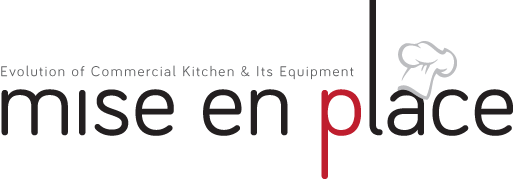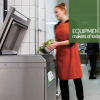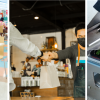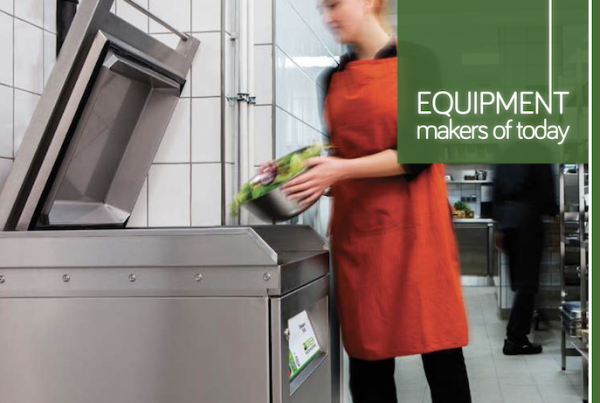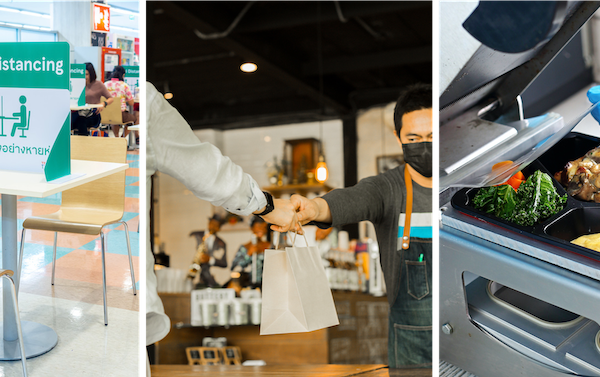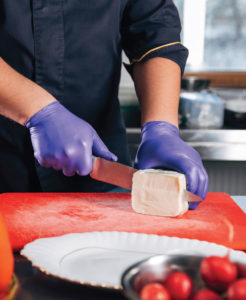 There is no doubt hygiene is an essential aspect of our everyday lives. However, if you are operating a commercial restaurant kitchen and bar, maintaining hygiene for food safety is even more imperative and this cannot be stressed enough. Food hygiene in restaurants is not just essential to ensure the health and safety of your customers and employees, but it also plays a significant role in building the brand image of your restaurant. From the bar area in the Front-of-House (FOH) to kitchen in the Back-of-House (BOH), all equipment used to promote hygiene, be it in food preparation or the premises itself, must be inspected and reviewed from time to time.
There is no doubt hygiene is an essential aspect of our everyday lives. However, if you are operating a commercial restaurant kitchen and bar, maintaining hygiene for food safety is even more imperative and this cannot be stressed enough. Food hygiene in restaurants is not just essential to ensure the health and safety of your customers and employees, but it also plays a significant role in building the brand image of your restaurant. From the bar area in the Front-of-House (FOH) to kitchen in the Back-of-House (BOH), all equipment used to promote hygiene, be it in food preparation or the premises itself, must be inspected and reviewed from time to time.
Remember, customers want to dine at a clean restaurant that serves hygienic food and drinks. If your customers think that the restaurant is unhygienic or unclean and the food and drinks are not prepared in a hygienic way, they will cross it off their list in a heartbeat. Then, you would have lost not just some repeat customers and sales, but also invited bad publicity on your restaurant.
SOME “MESS” OVER THE YEARS
Despite the huge improvements in food hygiene practices that F&B business operators have made over the years, there are still cases of unhygienic food practices by food operators which have caused food poisoning and even resulted in deaths. To cite some examples, in October 2018, a total of 83 cases, including two deaths, were reported after customers consumed laksa bought at a food stall in Kedah, Malaysia. More recently, 17 pupils from a primary school in Perak, Malaysia suffered from food poisoning after eating at their school canteen, while 49 students from another school in Kuala Lumpur came down with symptoms of food poisoning – including vomiting, stomach ache and diarrhoea – after having canteen food during recess in February this year. Neighbouring Singapore has also faced a spate of mass food poisoning cases in 2018:
• In November 2018, a mass food poisoning at Spize River Valley Restaurant left more than 80 people ill and caused dozens to be hospitalised from a stomach flu which resulted in 1 death after eating food catered from the restaurant. Several hygiene lapses were found including, leaving ready-to-eat food uncovered in a chiller, absence of hand soap for handwashing, since soap dispenser was faulty and, placing knives in the gap between the food preparation tables.
• In the same month, another 131 people including Kindergarten 2 children and teachers, fell ill and developed gastroenteritis after consuming food from a caterer while attending a learning camp in Bedok, Singapore.
• Early December saw another mass food poisoning case at the award-winning Mandarin Orchard Hotel where 175 people fell ill and 9 were hospitalised after consuming food at the grand ballroom of the hotel.
• In February this year, a catered lunch left 14 children, aged between three and six vomiting and having diarrhoea at a Toa Payoh preschool.
While these statistics are alarming, by understanding the best practices in restaurant food and equipment hygiene and sanitation, you can ensure that your facility is as safe as possible. As a guide, below are some common restaurant equipment that require strict attention in order to maintain hygiene in food and beverage handling and preparation and the areas surrounding it for the sake of your customers, staff and the business as a whole. Let’s first dive into the bar area of a restaurant to take a look at some of the equipment used there.

MAINTAINING HYGIENE IN A BAR
Your customer’s round of drinks are usually made and served from the restaurant’s bar and there are a number of equipment in this area that helps to swiftly and efficiently make the drinks. These equipment also help to promote food and beverage hygiene while performing its own functions. Some of the main equipment used in a bar area include:
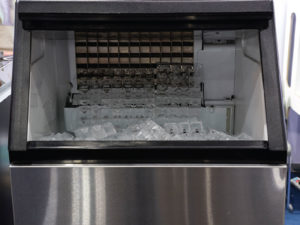 • Ice machines
• Ice machines
An ice machine is a great bar equipment to have on hand as it reduces the need for restaurants to acquire bags of ice whenever they run out and safer in terms of source as the ice is made in the machine itself. However, regular sanitation of these machines must be upkept as the ice that is churned out is food and improper hygiene can contaminate this food item. In fact, in July last year, a restaurant in Penang, Malaysia was ordered to close after Japanese cockroaches were found inside its ice grinder machine, which was also used to make ice cubes. The checks on the premises also showed that the barrel storing the ice was riddled with black stains.
As food safety issues are always a concern, having automated systems in place to initiate regular cleaning, sanitising, and de-scaling cycles ensures that the foodzone is regularly maintained. With advancements in technology, there are now ice machines in the market that offer easier cleanability and features to help inhibit slime growth, lime deposits, and mineral scale. This effectively reduces the number of cleanings, saves labour, time and money, as well as machine downtime during the cleaning process. In fact, ice machines like the INDIGO NXT by Manitowoc Ice by Welbilt also features a LuminIceTM Growth Inhibitor that creates “active air” over a UV light and passes over all exposed foodzone components to inhibit the growth of mold, yeast, bacteria, and other common micro-organisms.
• Glasswashers
Every bar has its drinks. And every drink has its glass. When milk foam, lipstick, fruit pulp, garnishes and egg whites need to be washed off from these glasses, a glasswashing equipment becomes a real necessity. Glasswashers have quick wash speed and use a combination of mild detergent and lower temperatures which support the longevity and cleanliness of the glasses. Whilst some warewashers can wash both plates and glasses, glasswashers are better suited for even the most delicate glassware. Not only is it more affordable and offers a higher output for a lower price, a glasswasher strikes the perfect balance between gentle water flow and enough pressure to clean thoroughly, making it the best choice for businesses where the prime focus is drinks.
When it comes to commercial glass washing technology, it is important to find a glasswasher that pulls out all the stops. Look for glasswashers that offer efficient cleaning performance, easy operation, maximum versatility, and exceptional value for money such as the new MEIKO UPster® range of glasswashers. With good wash water filtering and optimum tank water regeneration, UPster glasswashers promote clean results, quality and reliability in its washes.
• Blenders & Juicers
One of the likely culprits of foodborne illnesses come from improper sanitation and maintenance of equipment, including blenders and juicers. Today, many of these equipment are being upgraded for increased sanitary design and automation. Blenders and juicers are now designed for easy cleanup, with better moisture-resistant seals and rounded spaces to avoid food particles from getting trapped in corners and creating places for bacteria to hide.
• Underbar Sinks
While bathroom and kitchen sinks are usually given more attention, the underbar sink is a little more obscure. Usually referred to as a “wet bar”, underbar sinks are designed to be slotted into a bar, thus avoiding the need to bring the glasses all the way to the kitchen so that they can be washed after use. With an underbar sink, bartenders and servers can quickly and easily wash, rinse, and sanitise delicate glassware, even during the busiest shifts. These sinks feature removable and perforated drainboards that make them simple to clean and maintain as well as come equipped with backsplashes that prevent spills and stains from making a mess on bar walls.
